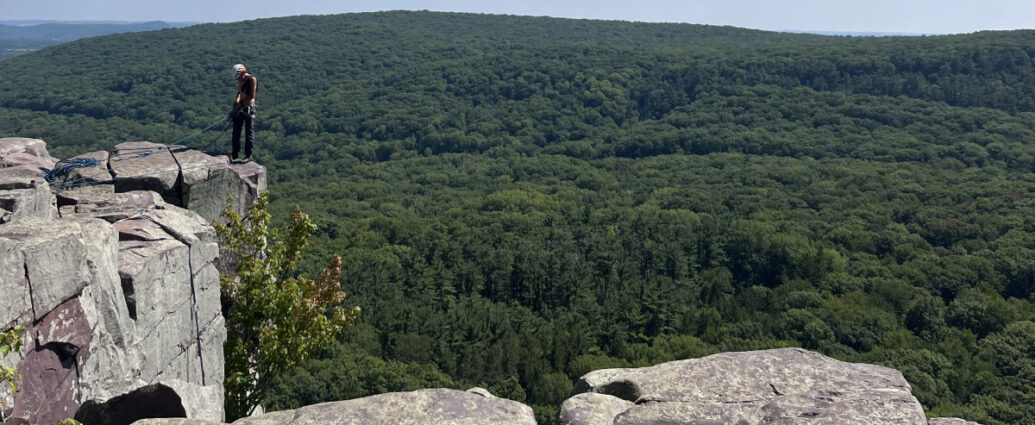Growing up in east Central Minnesota, I got used to a relatively flat environment. But as a lover of the outdoors, I had a few special spots to pursue hiking in a more elevated area. When I arrived in Madison to start school last year, I knew I would need to find a new hiking spot, as driving 5 hours to my favorite spots at home was not practical. After minimal research on hiking trails near the area, I found Devil’s Lake State Park and knew I needed to pay it a visit. I’ve always found it more insightful to research the history of a park before visiting, helping me gain a deeper understanding of what I am seeing.
History behind the park:
According to the Wisconsin Department of Natural Resources, devil’s lake state park became the third state park to be established in the year 1911. To provide some perspective about that time frame, the U.S. had not yet declared New Mexico and Arizona as states. They had just launched the Titanic. Therefore, devil’s lake state park really has some history!
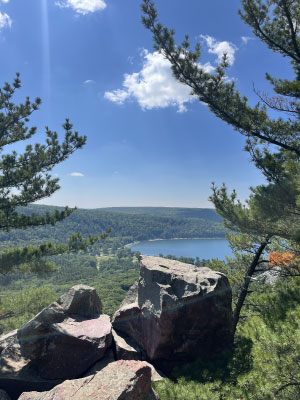
Evidence shows that prehistoric people from over 10,000 years ago sought shelter in the surrounding areas close to devil’s lake. However, the first undeniable evidence of people at the state park dates back about 1,000 years and comes from mound builders. This evidence can be seen through the diverse mounds left behind, which hold deep spiritual and cultural significance for the Ho-Chunk community, as stated in the devil’s lake state park area visitor guide.
In the mid-1800s, European immigrants and settlers built a rail line through the lake valley, serving as the catalyst for the tourism boom in the area. By the late 1800s, trains from Chicago and Minneapolis were bringing in numbers of visitors. In response, they constructed several hotels and resorts in the area.
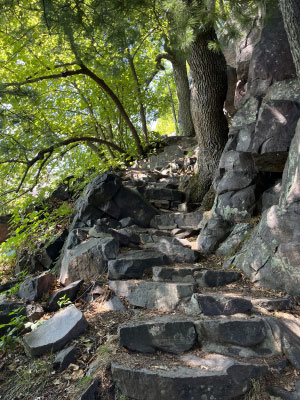
Then, the early 1900s arrived, and automobiles became everyone’s new obsession. This shift significantly altered tourism and lifestyles. Before long, the hotels and resorts in the area were left vacant.
In 1933, during the great depression, the civilian conservation corps (C.C.C.) work camp was confirmed. Over seven years, approximately 200 men devoted their time to work on projects to improve the park. They constructed trails, tables, benches, signs, a reservoir, and stone buildings. Additionally, they removed invasive species, moved roads, guided visitors to the bluffs, and patrolled the bluffs for fire. Their contributions still have a positive impact on the park today.
The hike:
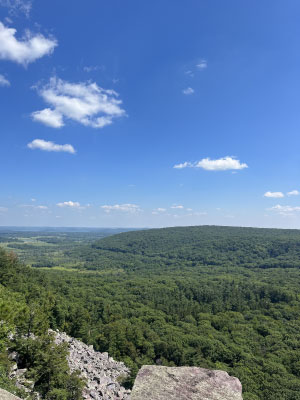
The drive from Madison, WI to devil’s lake state park took about an hour, a pleasant drive with scenic views along the way. I parked my car in the CCC parking lot and began walking along the CCC trail, a steady incline with stone steps. The difficulty level, as listed on the devil’s lake state park visitor guide website, is labeled as difficult, and it’s a popular spot for rock climbers. The trail’s distance is .3 miles, and you can expect to spend anywhere from 30 minutes to 1 hour on the trail depending on one’s capability and stops along the way.
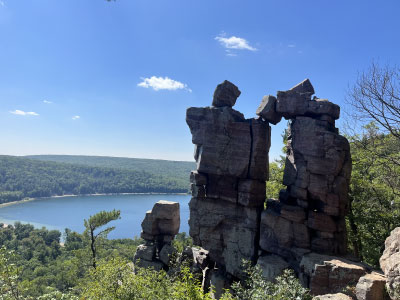
After completing the CCC trail, I encountered the ice age national scenic/east bluff trail. This trail can take up to 3.5 hours depending on how long you take it. The difficulty is categorized as moderate but varies across different sections of the trail. I followed the ice age national scenic trail for about .3 miles until I reached the devil’s doorway trail. This trail forms a little loop branching off from the ice age national scenic/east bluff trail, leading down steep and jagged stone steps to the formation. The difficulty is also listed as moderate, but some parts of the trail become very narrow. The trail is about .5 miles and typically takes 20-40 minutes depending on capability. Upon reaching the destination, its brilliance struck me; gazing at the formation left me in awe. The hike was unquestionably worthwhile because of the stunning scenery.
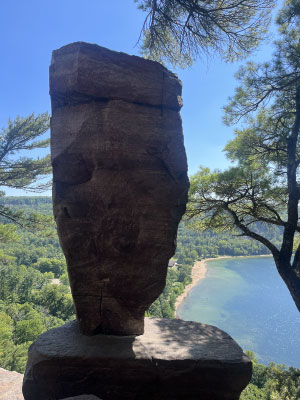
After visiting devil’s doorway, I continued my trek and head toward balanced rock. They list the balanced rock trail as difficult due to its steepness and stone steps. The trail spans about .4 miles and can take 40 minutes to an hour. While it might seem like a short hike on the map, it involves a steady descent along uneven stone steps. Nevertheless, balanced rock was yet another amazing sight to see. After returning to the top of the balanced rock trail, I decided to take the opposite route back, heading west. The trail turns back into the ice age national scenic/east bluff trail. Following this path, I was met with the grottos trail. The devil’s lake state park visitor guide describes this trail perfectly as an easy hike at the foot of the bluffs, but that it is lined with cold air sinks called grottos. Cold air from under the rocky talus fields on the bluff drops down into these grottos and creates wonderful, air-conditioned hideouts on hot summer days. Indeed, it serves as a refreshing refuge from the heat and is the perfect spot to take a break.
After about 2 hours of inclined hiking in the sun, I decided it was time for a swim! Devil’s lake quickly became my favorite swimming spot in Wisconsin. Not only is the water exceptionally clean and clear, but it is also the perfect temperature. I swam around for about 30 minutes, observing paddle boarders and kayakers passing by as groups of kids splashed around on their floaties.
Devil’s lake state park offers 29 miles of trails. Whether you’re embarking on a one-hour hike or planning a weekend camping trip, devil’s lake state park is unquestionably a must-see.
Writing and Photography By: Joelle Leigland
Information received from:
https://dnr.wisconsin.gov/topic/parks/devilslake/history#:~:text=Devil’s%20Lake%20State%20P
ark%2C%20founded,built%20on%20the%20west%20bluff.
https://www.devilslakewisconsin.com/learning-center/effigymounds/#:~:text=The%20effigy%20mounds%20found%20in,connecting%20with%20family%2
0and%20community.

